|
By Jake Arnold
The cases alleging perjury in grand jury testimony by Rio Arriba County Commission Chair Alex Naranjo and former County Manger Tomas Campos are on a procedural hold with District Judge Jason Lidyard recusing himself from presiding over either of them. With that action by Lidyard, the cases will now be assigned to one or a series of other First Judicial District judges. According to prior experience such matters involving prosecution of public officials, criminal cases brought them against them most often lead to a series of additional recusals (excusals by either defendants or prosecutors) until one of the other First District Judges ends up with the case. Each side has the option to exercise a one-time excusal of a judge ultimately assigned to a criminal case. In recusing himself from the Naranjo and Campos perjury cases on July 24, 2023, Lidyard did not disclose why he chose to do so. He simply stated, via standard court recusal form, that he had "good reason" to do so, without mentioning any specific details. Consequently, as a result of Lidyard's recusal and the expected sequential process of multiple, pro forma assignments to a series of other First District judges, further procedural actions in these cases are on hold. Until another judge does ultimately take these cases, no arraignments/first appearances can be set, no summons for the defendants to appear at such hearings can be issued, and no defense attorneys can enter their notices of appearance on behalf of the defendants. Also, on Thursday 7/27/23, upon receiving notice of Lidyard's recusals, the clerk of the First Judicial District Court re-assigned the Naranjo case to District Judge Mary Marlowe Sommer and re-assigned the Campos case to District Judge Glenn Ellington. Campos did tell the Santa Fe New Mexican newspaper that he is represented by top notch criminal defense attorney Tom Clark in this matter, but Clark had not submitted a notice of appearance on Campos' behalf as of 7/26/23; presumably because the procedural states of these cases are in limbo for the immediate future. Naranjo did not publicly identify, in his comments to that newspaper, any attorney who may be representing him in his companion case. But on Thursday, 7/27/23, attorney Elden Pennington did file an entry of appearance on Naranjo's behalf. But Clark has not yet filed an actual entry of appearance on behalf of Campos. The tortured history of the legal proceedings leading to the indictments against Naranjo and Campos goes back to June, 2019, when longtime political activist Antonio ("Ikie") DeVargas of La Madera submitted a petition submitted to Lidyard, signed by several hundred Rio Arriba County residents, seeking to have Lidyard convene a special grand jury to investigate alleged wrongdoing (criminal or simply malfeasance in nature) on the part of the North Central Solid Waste Authority, that governmental agency's employees and/or board members . Naranjo, as a county commissioner, was formerly and is now once again, a NCSWA board member. Campos, as a former county manager, was once a NCSWA board member. The NCSWA owes its existence to a joint powers agreement executed by Rio Arriba county, the City of Espanola and other units of local government including two Native American pueblos. Pursuant to that agreement, representatives of those entities sit on the NCSWA board. However, shortly after the emergence of the of the Covid pandemic, the state Supreme Court suspended all state grand jury proceedings until the pandemic no longer made such proceedings impossible to continue. Finally, in early 2023, grand jury proceedings could once again resume and Lidyard issued an order to convene a special grand jury in response to the 2019 DeVargas-initiated petition. Any such grand jury proceeding requires the involvement of a state prosecutorial agency (local District Attorney's Office or the state Attorney' General's office). As it so happened, the First Judicial District Attorney's Office prosecutors attempted to scuttle the convening of a NCSWA special grand jury by Lidyard and a procedural battle between DeVargas, his attorney Richard Rosenstock and Lidyard transpired. The DA's prosecutors argued that a 2022 state Supreme Court ruling severely limited the functions of grand juries and the ability of prosecutors to use grand juries as a vehicle to bringing cases against targets. Lidyard rejected that move by prosecutors since the 2022 state Supreme Court order in question applied solely to "regular" grand juries and not to "special" grand juries convened on the basis of a citizen petitions, as authorized by the state constitution. Therefore, a NCSWA special grand jury sought by DeVargas and his co-petitioners was eligible for him to convene. Lidyard did convene this special NCSWA grand jury and its proceedings commenced on April 24, 2023. That grand jury, as do all other state grand juries, had a legal term of 90 days during which it could deliberate, hear/see evidence and choose to indict (or not indict) "targets" or witnesses who may have perjured themselves when testifying before it. The term of this special grand jury expired on July 22, 2023. Three days earlier, on 7/19/23, the grand jury handed up indictments against Naranjo and Campos for perjury to Lidyard. The indictments state that Campos perjured himself in grand jury witness testimony on May 31, 2023, and that Naranjo perjured himself in grand jury witness testimony on June 28, 2023. In their respective grand jury witness testimonies, both Naranjo and Campos claimed they were completely unaware of allegations or reports of any NCSWA wrongdoing discussed at board meetings when they were members of that board. The indictments state that the conclusions of perjury for both defendants were based not on testimony of other witnesses, but on a documentary record that included minutes of NSCWA board meetings in which both Naranjo and Campos participated. Those minutes (included as exhibits in the report) demonstrate that both defendants were acutely aware of NCSWA wrongdoing/likely criminal conduct by NCSWA employees/officials. Based on those indictments, Lidyard, the following day (7/20/23), initiated fourth degree felony criminal cases for perjury against both Naranjo and Campos. The next day (7/21/23) the special NCSWA grand jury submitted a 22-page report on its deliberations, recommended actions by the court/prosecutors, indictments requested, and as a series of findings pertinent to the history of the NCSWA over the past decade since its creation. It is unclear if all or portions of this report was the work of grand jury members, the prosecutors from the DA’s Office, or both. The report is highly critical of the DA's Office, claiming that the DA's prosecutors effectively tried to stonewall the grand jury when it sought assistance or evidence from that agency. The report reveals what may be a hostile relationship from time to time between the grand jury and the prosecutors. So, while Lidyard has the report in hand and did initiate the actual criminal cases against Naranjo and Campos, he is now out of the picture and the expected series of recusals and likely excusals of the other First Judicial District judges is now underway--a process that could last for an indefinite time period. In one curious and mistaken understanding of what is legally possible regarding action against other NCSWA figures that appear in the report (certainly composed by grand jury members rather than the prosecutors) the report recommends "indictments" against those other NCSWA figures for "malfeasance." No crime of "malfeasance" is included in any New Mexico criminal statutes. Whomever composed that portion of the report's text may have been confused about a different, and extremely rare procedure that can be initiated by a special grand jury in conjunction with the prosecutor assisting a special grand jury and the district judge supervising its proceedings. This unusual procedure allows for a finding of "malfeasance" or dereliction of duty in the conduct (or lack thereof) on the part of a currently sitting elected official--a county commissioner for example. Key to this provision is that the targeted individual must be an elected official and the articulated finding of malfeasance must be related to/be in progress during that official's current term of office. This procedure cannot apply to non-elected officials, onetime officials no longer holding office, and cannot apply to misconduct during an elected official's previous term(s) in office. If this unusual procedure were to come before the supervising district judge, he/she could suspend that elected official from office pending a civil trial to resolve the recommended removal from office for malfeasance. That trial would proceed as a civil case, but the rules governing its adjudication would follow the rules of criminal procedure. The targeted elected official would then be subject to a ruling of removal by the district judge, or conversely, the judge could issue an effective "acquittal" and the targeted elected official could resume his/her term in office. None of the individuals identified in the special grand jury report are erroneously recommended for "indictment" or "malfeasance" could be subject of this arcane provision of the statues. Only one of them (from a total of six altogether) was an elected official--a former Rio Arriba County commissioner who is longer holding elective office. The other five are/were NCSWA employees/board members but are not/were not elected officials. Another intriguing aspect of the special grand jury report is that the members of this body "recommended" an indictment against three individuals. The grand jury did just hand up indictments against two of them, Naranjo and Campos, but did not do so in the instance of the third individual that this special grand jury sought to see prosecuted, former Espanola City Council John Ricci (no longer holding elective office), who was once a NCSWA board member. It is not clear if the decision not to proceed with an indictment against Ricci, when the special grand jury handed up indictments against Naranjo and Campos on 7/19/23, was that of the DA's prosecutors or a decision by the grand jury members having reconsidered their initial recommendation as stated in their report. Both special grand jury members and/or the DA's prosecutors could have composed different portions of this report.
1 Comment
~By Jessica Rath How many times have you seen a tree that was struck by lightning and caused a fairly substantial wildfire? THE tree that started it all? Well, I had to become 77 years old before I could cross this item off my bucket list (I’m joking, I don’t have one). And not only that, I got to meet the person who first discovered the fire! On July 6 I joined a field trip organized by the El Rito Ranger Station of the Carson National Forest, to look at the Comanche and Midnight Fires and see the fire effects of a few weeks and a year later. I didn’t go to the Midnight Fire site because it would have become too long of a day for me, but I want to share what I learned during the first part of the trip. It certainly was fascinating, given the fact that wildfires are normally (and rightly) seen as something to be feared. But they also have beneficial effects, something I had never really considered before. About 20 participants, maybe a few more, gathered in the parking lot of the Carson Forest Ranger Station at 9:30 in the morning. Angie Krall, the West Zone District Manager, showed us on a map where we would go and told us what would happen during the day. First, we would visit a Type Four level active Fire Incident: the site of the Comanche Fire. Fire officials decided to contain the wildfire and allow it to burn at a low intensity. They established boundaries and consulted resource advisers. The fire started between El Rito and Canjilon, and crews have been using a “confine and contain strategy” which means they allowed the fire to work its natural role in the ecosystem. We took Forest Road 137 to drive to the burn site. As we passed the area of the 2005 Pine Canyon Fire on our right, we saw the skeletons of burned trees. In some places the 2005 fire made space – which is one of the goals of prescribed burns. We passed ponderosa, pinyon, and mixed conifers, the typical vegetation of the region. A prescribed burn, the Stone Angel Project, is being planned just west of El Rito in the next few years. We noticed that the left side of the road looked very different from the right side; while the left side was overgrown with shrubs, saplings, and scrub oak, on the right side the fire had thinned out the vegetation. For our first break we parked somewhere near the fire, and Tommy Peters, the Incident Commander Type 4 trainee, gave us an overview of the Comanche Fire history. On June 8, lightning struck near the El Rito/Canjilon border and caused the fire. The fire and fuels team from the West Zone of the Carson, together with a resource specialist, looked at it, and they formed a strategy for a fire-planning area. On June 12, the fire crews and teams got together, and they created a plan to contain the fire for an area of up to 10,000 acres.The purpose was to reduce future risk to natural resources and communities. On June 21 a drone and a helicopter ignited several spots from the air. In May and early June we had a lot of moisture, but then the rest of June became dry and windy, which wasn’t the desirable weather for the plan. They started with low intensity fire which later turned into more intensity than desired. At that point ignitions ceased. The latest Forest Service update says the fire activity is minimal and the crews will work only to cool any possible hotspots. From the start of the fire until the day of our field trip, 1974 acres were burned, a number which has a good landscape effect. There were less than two acres of high intensity effects, exactly what the planners wanted to see: lots of small pockets of fire; a mosaic. On the day of our visit several engines were still there to monitor and control the line. The day before, on July 5, the temperature was high and it was windy, but there were no great reactions. There’s a slurry line for the safety of firefighters and natural resources. Tommy stressed that firefighter- and public safety always come first and are the most important concern. So far, the Ranger Station is delighted with the results. The resource advisors say that everything of value will be considered. Last year’s Hermit's Peak/Calf Canyon Fire, two escaped prescribed burns, became New Mexico’s largest and most destructive wildfire ever. As a result, several new policies have been implemented. There’s much more community input. For the Comanche Fire more resources have been added, there were press releases, two community meetings, and daily updates. Procedures are more transparent and monitoring is more robust. Prescribed burns had come under attack because of the devastating destruction last year’s fire had caused. People were angry because the fire could have been prevented. They concluded that there are too many unknown variables to conduct safe prescribed burns. While this is an understandable reaction, I came away from this field trip with a different impression. Something that utterly surprised me because it was so unexpected: A fire, when correctly monitored, is beneficial for the forest and the understory. It prevents overcrowded trees, supports forest health and resilience, and therefore lowers the risk of more dangerous wildfires. Dense vegetation with lots of brush, shrubs, and trees burns quickly, especially in a dry climate. These types of burns also help the watershed: with fewer plants, streams are fuller and benefit animals and other plants. In addition, they keep the forest canopy mostly intact presenting less risk of erosion and landslides. By contrast, hotter wildfires remove most if not all canopy and ground cover. I was also impressed by the knowledgeable and scientific approach to wildfires. They had always left me with dread and apprehension. To learn that the many professionals who deal with fires have a huge repertoire of tools, techniques, experience, knowledge, and training, felt reassuring indeed. When we walked around through the burned areas, our guides would point out interesting facts. For example, Ponderosa pines are well-adapted to fire; they have very thick bark which can survive a fire. And the branches are high up, so the fire can’t jump up a tree. We went to a look-out spot and could see some open areas from past fires (I’m not sure whether these were prescribed burns). A hundred years ago there would have been many more open spots, and the vegetation wouldn’t have been so dense. I happened to get a ride in the truck driven by Lorenzo who works for the Forest Service and was the one who discovered the fire. He told us what had happened: he was looking for vigas, and then smelled the smoke. We drove by the tree where the lightning had struck– what a moving sight. Lorenzo also pointed out that because of the early rain in May, the grass along the road and everywhere else grew very high. Then the rain stopped and the grass dried out, increasing the danger of fire. We had lunch at the Comanche Creek. The fire crews repaired the fences around the creek and installed some water containers for cows and wild animals. The situation there is better now than it was before the fire broke out. We drove back to the Ranger Station, and most of the other participants went on to look at last year's Midnight Fire site. I had to miss the second part, although I’m sure it was as fascinating as the trip to the Comanche Fire. What an exciting experience this was – and I have a much better understanding of the mechanisms of prescribed burns. It was an altogether successful day.
I know I say this a lot, but I feel super special and fortunate that I get to live in a place that still has that warm, family feeling of belonging and community. Mostly gone are the days when complete strangers can sit together at a large table and share both a meal and some “get to know you” stories. This is what my wife and I got to experience last Friday afternoon at La Sala at Owl Peak Farms. First of all, just getting there is a visual treat. We drove through the charming and ever colorful town of El Rito then kept winding through the scenic splendor of the foothills of Cerro Colorado and zigzagged along the cheerful sparkling waters of Rio Vallecitos and Rio Ojo Caliente. It was another very hot day, but once we got to the beautiful, lush valley of Canada De La Cueva, a nice coolish breeze rose up with subtle scents of coyote willow and wildflowers. Soon, we came upon the cute, white washed adobe building that is the aptly named La Sala. Stepping into this place has a pleasant, open feeling. The wide plank wood floors, tall pitched ceiling and several communal dining tables make you feel right at home. Tables laden with homespun supplies like honey, fresh ground flour and pinto beans grown right there on the farm are brightly displayed. The fun and casual bustle of people cooking and greeting with several dogs happily running under foot makes me down right happy. For those of you who may not yet know, let me tell you a little about what’s going on here. Owl Peak Farm has been revitalizing the land in La Madera since 2010. C.C. Culver is the heart and brains behind OPF. She has an amazing and generous spirit and I am always astounded with the energy she throws into everything at the farm. They grow beans, corn, wheat, fruit and many grasses, as well as so much more. They are committed to enriching the valley and ensuring its prolonged health and abundance. Owl Peak opened a grain mill last year and now are providing local eateries with small custom ordered sacks of freshly ground and locally grown Blue Corn, Turkey Red Hard Wheat and Sonora White Winter flours. They also grow and dry pinto beans. If you are lucky, you might just be able to snag a bag of beans or a sack of flour. They also sell farm fresh eggs, corn, baked goods and a variety of mustards and unique condiments. They have generously opened up this beautiful building to the local public to gather for meals and games and sometimes, even bingo! There isn't really a structured schedule, so one needs to be alert and pay attention. If ever you get word of one of these fabulous and very special events taking place, go, just go! Being here on this wonderful Friday was quite a treat. Shortly after we arrived, out came huge trays of savory and delicious food. There was beef barbacoa, perfectly grilled and seasoned. It was flaky and flavorful and just delicious. Bowls full of freshly made pico de gallo, smooth guacamole and home grown sweet corn with herbs lent a tart and spicy taste and I was not shy about piling my plate high. Fresh made pinto beans straight from the field and a tender, perfectly cooked and seasoned white rice rounded out the meal. All this to be topped upon either a homemade flour tortilla or a yellow corn tortilla. Does it get any fresher? There was also an amazingly melony fruit salad. The watermelon and honeydew tasted like Mexico. Someone then brought over a salad to our table that we had somehow missed, made of butter lettuce and citrus with a light vinaigrette. It was a lovely palate cleanser and very refreshing. Now, for the desserts. My goodness, there were so many and all were spectacularly good. My favorite was the very chocolaty brownie, but close seconds were the plum torte (C.C.’s favorite recipe from her favorite New York bakery) and the strawberry coffee cake. All very professionally executed and mostly baked by C.C. herself.
There’s an industrial refrigerator stocked well with a variety of beverages for the grabbing. My wife and I shared a bubbly water, so as not to distract from the culinary showdown. During all of us politely but ravenously stuffing our faces, one of the men who lives nearby and was somehow involved with feeding us all, whipped out his guitar and started playing beautiful cat gut acoustic classical sounds, so soft and perfect. We have been through this experience before at La Sala. Therefore, we knew that there was no assumed expectation of monetary trade for all this extraordinary grandeur. So we casually slipped some bills under the decorative house made biscotti jar to which I noticed several other diners did as well. This entire experience feels a bit like a dream, a dream I’d like to have again! On a personal note…Along the vein of warm family feelings and community, this will be my last article for the time being. It has been an extreme pleasure and I am honored to have shared our humble and fun adventures with you along the way. Perhaps we’ll see you on the foodery trail. Meet Susan Seiller, Guest Feature Writer Susan Seiller, a former owner and operator of three restaurants in Kentucky, currently resides in El Rito. She works as a private chef, property caretaker, and critter sitter in Abiquiu, El Rito and surrounding areas. I love goats. Any animal actually, but goats in particular. And I love to cook. So, after a Monday visit to Malandro Farms to visit the goats and a Tuesday visit to the Farmer’s Market, I was craving feta cheese. This soft, white, brined cheese that is traditionally made with sheep’s milk can be made with goat milk or a combination of both. It has a soft crumbly texture and a tangy, slightly salty flavor. Not only does it taste earthy and delicious, but goat milk and goat cheese have many nutritional and health benefits over cow’s milk and cheeses including:
Smoky Marinated Feta Makes 2 cups Adapted from YOTAM OTTOLENGHI Smoky Marinated Feta keeps for up to five days in the refrigerator (the flavors only get better the longer it sits), and it’s equally delicious on toasted Jaconda Village Bakery Bread, in a Greek salad, as part of a mezze platter, with roasted brown butter Berbere carrots, in tzatziki Sauce, as a substitute for Mozzarella in a Tomato+ Basil and Balsamic salad or sprinkled on a Lebanese Lamb Stew with tomatoes and green beans. It only takes about 15 minutes to make. Measure everything ahead…once your skillet is hot it happens quickly! INGREDIENTS 10 garlic cloves, peeled 1 lemon, skin peeled into 6 strips 4 bay leaves 2 teaspoons red chile flakes 1 cup extra virgin olive oil 1 teaspoon flaky sea salt 1 ¼ teaspoon smoked sweet paprika 1 ½ cups Greek feta (360 grams) cut into ½ inch cubes PREPARATION
Tomato, Basil, and Smoky Marinated Feta Salad No recipe needed, but it’s important to use a syrupy aged balsamic and a little olive oil from the marinated feta. I added raw fresh corn for variety. Roasted Carrots with Feta and Berber Vinaigrette
8 Servings This recipe is a little bit of work, but well worth it Adapted from Marcus samuelsson Ingredients SPICED BROWN BUTTER ½ cup (1 stick) unsalted butter ¼ small red onion, finely chopped 2 sprigs thyme 1½" piece ginger, peeled, coarsely chopped 1 small garlic clove, finely chopped ¼ tsp. dried oregano ¼ tsp ground cumin ¼ tsp. ground turmeric 1 tsp. Berbere seasoning (Jambo in Santa Fe makes their own blend) CARROTS AND ASSEMBLY 2 lb. farmers market carrots, cut on a diagonal into 3" pieces, unpeeled 6 Tbsp. vegetable oil (divided 4 + 2 Tbsp.) Kosher salt, freshly ground pepper 3 oranges, thinly sliced into rounds, seeds removed 1 Tbsp. fresh lemon juice 1 Tbsp. honey 2 tsp. Dijon mustard ¼ cup Italian flat parsley leaves with tender stems 1 cup smoky marinated or plain feta cheese Preparation SPICED BROWN BUTTER 1. Melt butter in a medium saucepan over medium-low heat, then simmer gently, reducing heat if needed and skimming foam from surface, until butter is no longer foaming and is beginning to brown, 10–15 minutes. 2. Mix onion, thyme, ginger, garlic, cumin, oregano, and turmeric into brown butter and cook, stirring occasionally, until onion is golden brown, and mixture smells very fragrant, about 15 minutes. Stir in berbere and cook, stirring constantly, just until the spice mixture is very fragrant, about 1 minute. Strain brown butter through a fine-mesh sieve into a small bowl and let cool completely, discard solids. Do ahead: Spiced brown butter can be made 1 week ahead. Cover and chill. 3. Preheat oven to 400°. Place carrots on a large, rimmed baking sheet. Drizzle 4 Tbsp. oil over, season with salt and pepper, and toss to coat. Add orange slices and gently toss again to combine. Roast, tossing halfway through, until carrots are browned in spots and tender ( they should be easy to pierce with a fork), about 30-40 minutes. Let cool slightly. Meanwhile, whisk the lemon juice, honey, mustard, remaining 2 Tbsp. of oil and 3 Tbsp. spiced brown butter (reheat if it has solidified) in a small bowl. This is your vinaigrette. 4. To serve, toss carrots in vinaigrette and transfer carrots to a platter. Top with parsley and crumbled feta. Have fun creating dishes with feta … And always, let us give thanks to all our farmers, ranchers and others (including goats) who grow and/or provide our tables with food, glorious food! First the back story, according to Andrew Furse, cofounder of the Abiquiu Farmers Market. In 2016, I had a conversation with Richard Trout who was then on the board of Tres Semillas, the foundation that owns and manages the property adjacent to the Abiquiu Post Office. I gave him my best spiel for why a farmers market might be successful in Abiquiu on that land. (My dad is a salesman and so is my younger brother. My older brother is a lawyer and I'm a chore boy so hyperbole runs in my blood.) Trout replied, “Young man, let's give this idea a go. It just might work.” In 2017, Lupita Salazar and I started in earnest and slowly people started to show up.... Some of the first to vend were Gil Luhman, Gloria McFarland, Peggy McCracken, Jeff Nitz, Vivian Jean and Tiffany Fernandez. We started small, never charged anything to participate and felt really proud every week. Miraculously, people understood the open invitation to sell, and more vendors started showing up. Nobody really knew who was running this thing, it just grew legs on its on. At that time, I acted as a veggie broker. I would buy from Malandro Farms and sell for some extra change. People would ask, “Where is your farm” and I would just point north. In 2018, I got a phone call from Eunice Naranjo who wanted to sell and was calling for details. Eunice invited Lloyd Ferran and Xochitl Romero, both of whom sold in Espanola. With Eunice as a connection, word spread rapidly. The late Thurman Reitz of Chama River Farm started showing up all the way from Los Ojos to sell eggs! A retired veterinarian, he made the trip gladly, enjoyed the market and sold out every week. We miss Thurman. May he rest in peace. After the 2018 season, we decided to participate in the United States Department of Agriculture Supplemental Food Assistance Program (SNAP). We hoped Luciente, Inc., might be interested, so we reached out to board members, Wendy and Bob Dolci. Doing so was one of the best ideas we've had since showing up to an empty parking lot. In 2019, The Abiquiu Farmers Market became a sponsored program of Luciente. With their support, we developed Kid Bucks, a voucher program which engages children with the market by providing them economic independence. Each child that shows up at the market is showered in colorful paper voucher-money that can be spent however they choose. Jen Harrington, a retired educator and the Luciente board president, prints and cuts out every dollar given away, every week of the market. It's amazing how much joy three dollars can give a child when the decision is theirs on how to spend it. Our hope is that Kid Bucks will help children develop positive relationships with, and leave lasting memories of, farmers markets that last throughout their lives. When I once watched a young boy take his money and buy flowers, I smiled and remembered the Red Sovine song, “Roses for Mama.” During this early history of the market, Lupita was working with Northern Youth Project. She and Andrew chose late afternoons on Tuesdays to avoid other markets' days and to make it convenient for local customers to come by on the way home from school or work. Her initial concerns were to make the market accessible and affordable, inclusive and diverse. During Covid, the size of the market increased substantially, so she focussed on keeping money in the community. She now concentrates on things remaining low-key, down-to-earth and continuous. Adhering to a credo of do-it-yourself, Lupita is just as proud of a kid showing the initiative to bring a few eggs to sell as she is of attracting a new professional vendor. She will even interrupt a story being told about teaching the turkeys to eat grasshoppers to go straighten out a parking snafu. It's easy to see why Eunice Naranjo is the perfect ambassador for the Abiquiu Farmers Market. Her husband, Joe, an renowned potter from Santa Clara Pueblo, is from a family full of farmers growing alfalfa, corn and beans. It seemed like a natural progression when she grew so many cherry tomatoes and cucumbers that a decision was made to start selling at the Espanola Farmers Market. Ron Cox encouraged her to participate in the Abiquiu Farmers Market and for years, he's kept his promise, that if she did so, he would help. Earlier in the season, they had starts grown from seeds and in containers that had been saved by family and friends. This week there were brownies, eggs, zucchini bread and jam. When Eunicetravels, she makes sure to visit other farmers markets to learn from and share her own knowledge about special blends and recipes. She sells in Abiquiu and Pojoaque. And yes, she is an accomplished potter, too. Xochitl Romero of de Sol a Sol in Cuarteles has, by far, the most fragrant canopy full of candles, sage smudge sticks, soaps, healing salves and lavender-filled sachets made of vintage linen, silk and cotton. There's always cota tea and often perennial seedlings including strawberries. On her fresh produce table, micro greens and lettuce mixes, parsley and apricots are nestled among floral and herbal bouquets. Xochitl was born Nayarit, Mexico, so it all makes perfect sense since her name is Spanish for flower. Her husband wanted to make sure everyone knows that their farm name comes from the ancestors and that free humor is available to order – both good and bad. One day, he thought it was too hot for either. They sell in Abiquiu and Taos. Later in the season Lloyd Ferran, a proud Senior Olympian of Hernandez, will be roasting green chili. So, he will be smelling pretty good, too. He said his story was simple, he enjoys farming and has a lot of fruit trees. He also admitted that it makes his wife mad that he's always outside gardening but she tries to make the best of it by baking lots of zucchini bread with walnuts and raisins. Her loaves not only sell out but are often reserved. Right now, Lloyd has ground red chili, apricots, cherries, tomatoes, onions, and radishes which he plants every three weeks to provide a steady supply. And, there are bags of the most delicious dried and thinly sliced apples. In addition to Abiquiu, he sells in Espanola and Pojoaque. Flora Chavez, who lives in Santa Cruz and is often accompanied by her daughter, Becky, also credits Eunice Naranjo for introducing her to the Abiquiu Farmers Market. She grows her own fruit and bakes big loaves of delicious apricot and banana bread and often has special smaller pastries full of blueberries and strawberries. Yet another vendor known for consistently selling out, she is also recognized for the wide variety of plants that thrive in containers on her patio including cilantro, habanero peppers and tomatoes. It sounds like some delicious salsa might be in the making. Flora sells in Abiquiu and Pojoaque. Most weeks, the tempting selection of flavored honey sticks produced by RZs bees of Ohkay Owingeh is the most popular purchase made with Kid Bucks. Mason jars of local raw honey are available up to an approximate weight of 5.7 pounds! In 1990, the bee hives were handed down to Ricardo Z. Sanchez by his father-in-law, Robert Hayes. Ricardo always credits his success to his late wife, Deborah Hayes-Sanchez, and since retiring from Los Alamos National Labs, he continues to farm south of Alcalde and sells honey in Abiquiu, Espanola, Los Alamos and Santa Fe. Last week, Jacona Village Bakery's delicious cookies were the main attraction for another little guy who already seemed to know the location of the wood fired sourdough bread booth at the far end of the market. Dylan Sparks and Laura Kosowski focus on local ingredients to present a special menu each week from which they accept preorders. They mill all of their whole grains in house the day before baking and sell in Abiquiu, Dixon, Los Alamos, Nambe, Santa Fe and Velarde Don't forget, Kid Bucks can also be redeemed at the Frosty Cow as well as Fire N Ice. And, don't worry, honey is good for you – not to mention that I saw a kid buying a beautiful bunch of carrots! One market's funniest comment was made by that cookie-loving younger brother of two older sisters. While Lupita was doling out his loot, he emphatically announced that green was his favorite color! There's another small child who must be banking bucks – at least it seems like there already some brightly colored bills in those tiny hands before any are handed out on a given day. Who knows what he might be saving up for? Today's comedic winners were two boys telling Andrew jokes like “What do roots drink?” Gardeners might answer water, but this kidder declared, “Root beer!” His cohort offered “What do you get when you mix ice and cream?” Yep, “Ice cream!” Either answer sounded great.
The idea, to find out about local farmers markets and write about the fun and fabulous one in Abiquiu, turned into a bit of a scavenger hunt for two friends from El Rito. Two websites proved to be great resources: one for the big picture and the other, our own state's version. The Farmers Market Coalition (farmersmarketcoalition.org) poses, and answers, the question: Why Farmers Markets? This organization describes three complementary goals. “Farmers earn fair prices for the fruits of their labor by selling directly to consumers. Consumers gain access to fresh, nutritious, local produce. Communities regain a figurative 'town square,' experiencing the many positive outcomes of foot traffic and community connection.” The New Mexico Farmers' Marketing Association (newmexicofma.org & farmersmarketsnm.org) also focuses on three-fold concepts, “connect, grow, learn” with an emphasis on providing a way to “find, prepare, be inspired by New Mexico-grown and raised foods.” Their website includes a vast array of information about everything from locating a market, trainings, events, grants or food assistance programs to seasonal recipes and videos. Even though we felt like we were running a little behind, as sort of an introduction, we visited a few markets close by – talking first to Andrew in Abiquiu, traveling to Los Alamos to speak with Cindy Talamantes and then chatting with Sabra Moore in Espanola. (Sabra assured us that the weather had delayed harvesting and that our timing was OK.) Each of these market managers have a wealth of useful information, including federal and state subsidies like Double Up Food Bucks and FreshRx, a produce prescription program. Finally, the foodie of the two of us, decided to create a fictional menu around some feta cheese she'd received as a gift. So we begged our way in to see its makers: Lisa Anderson and the goats of Malandro Farm just north of Abiquiu. Yes, we've gone full circle – it's the very same place Andrew mentioned at the start of his story whose produce and flowers are now sold in Abiquiu, Santa Fe and Taos. And, it's nothing short of a miracle but, despite our behavior (one of us wanted to know the name of every single flowering plant, the other was intent upon kissing the goats), we've been invited back for a nonfiction lunch at the real farm along the Chama River. Do check out her recipes and absolutely go to the Abiquiu Farmers Market on Tuesdays from 4-6pm, June to October. It's alive and well worth the trip. This week fifteen vendors had tamales, dried apples, apricots, eggs, honey, empanadas, jams, peas, onions, tomatoes, radishes, potatoes, garlic, cabbage, lettuce, kale, chard, amaranth, baked goods, lotions, salves and soaps. We appreciate all of their hard work. As Andrew would say, “Thank you to all who show up.” Be sure to let the editor know if you'd like to read individual Abiquiu Farmers Market vendor profiles and please think about how our current situation could be even better if we revived local access to a mobile food cooperative. By Jessica Rath Abiquiú has its own Farmers Market! If you are a local, you may have stopped by some Tuesday afternoon in the summer. Maybe you’ve even “bought” some produce from a booth that’s mainly staffed by kids. The quotation marks refer to the fact that it’s run by a non-profit organization; they don’t currently sell anything but people can make a donation in exchange for their purchase. But what’s really remarkable about the veggies you might get there is the fact that they were grown by kids. Quite young ones, and a bit older ones. They’re participating in programs offered by the Northern Youth Project. I find it beyond fabulous that young people can dig the soil, take care of little plants and see them grow, acquire valuable skills, AND have a great time in each others’ company; so, I asked if I could stop by, learn more, and take some pictures. NYP has programs for two age groups: the Bridge Program for little kids aged 5 to 12, and the Internship Program for teenagers and young adults, from 13 to 21. I decided to show up on a Friday when both groups are present. The Agriculture Director, Ru, explained to me how the irrigation system works. They collect water in a tank, and with an acequia they do flood irrigation the traditional way: they start at the top terrace, and from there the water flows into the lower fields. Last year they grew corn there, and they just finished setting up for planting corn this year as well. Some of the water gets diverted to other beds. I wanted to know how many kids participate. “There are about ten solid interns, but they don’t always come every day. And we have between 15 and 20 small kids in the Bridge Program. Friday is the busy day!” Ru explained. Next, we met Ash, the Coordinator of the Bridge Program. She showed me a bed that’s dedicated for the younger kids. Adults and teens have helped to set it up correctly, so it’s an easy project for them to maintain. The kids in the Bridge Program come three times a week, with all ages on Friday. There are different sections for different ages within the Bridge Program: they all help with the planting process, they have picked what they want to plant. Hannah, who was a Senior Intern, is now the Bridge Program Assistant. Besides gardening, there are art projects with visiting artists. I’m looking at the herb-garden, brimming with oregano, rue, thyme, rosemary, sage, lovage, and fennel. It’s all organic. They fertilize with compost, but also make comfrey-tea: the teens produce that, because they want to learn about gardening. Some of the kids kindly agreed to let me ask them some questions. I started with Colette, 16 years old, and her sister Chantal, 13. They live in Medanales, and this is their third year in the program. I asked them to tell me why they’re participating? “One can learn about the culture of the area, so we decided to come. It’s a great place to be and meet people. We can help our Mom with gardening, use the skills we learn here, and take it to the future if we decide to have a garden of our own. Sometimes we help with the Bridge Program, with the smaller kids; that's a good life lesson.” Colette will be going to college next year, she is going to study biology, and the work here will help her with that, she told me. I asked about the Bridge Program and the Internship Program. Is there a difference in what you do? “When you’re older, there’s more responsibility and work/labor. If there’s weeding in the sun for example, the little kids do it for a bit, but when you’re older, you finish the task. Also, you get a sense for what you like to do. When you’re little you find out what you like and don’t like to do; when you’re older, you don’t have to do what you don’t like, because there are other people who take over. If you like watering, you can focus on watering. You have more choices, and you have more responsibility.” Do you come here only in the summer, or throughout the year? “The program runs throughout the year, but during school time we’re super-busy and can’t attend so many events. But there are field trips and a lot of things that go on on the weekends that we get invited to. We've gone rock climbing, sometimes we partner with Ghost Ranch and go kayaking with them on Abiquiu Lake. It’s a great social, interactive program. It’s nice to meet people who have the same interests as you do.” [My apologies to Colette and Chantal; for simplicity’s sake, I didn’t distinguish between who said what but summarized their answers.] Next, I talked to Tito, age 14: “I started out a year ago, first as a volunteer, helping with the little kids, and this summer I started working here again. I’m in the Internship Program now. I like the social aspect, and everything I learn about plants and so on is going to help me when I’m older. I’m young, and the more information I can gather the better. I may have a personal garden someday!” I asked Tito if there was anything here that he particularly liked learning about? “Not really, it’s everything at once. The whole thing.” Is there any job that you prefer doing? “I definitely like watering, digging, and building trenches. The soil is so dry. We get the option to do what we like, set our priorities. I appreciate that Ru gives us the option to choose what we do.” Thank you, Tito! And last, I got to talk to a few of the little kids: Jude, who is eleven, Felice who is nine, Nico, also eleven, and Antonio, almost nine. (Antonio is the son of Jennifer, NYP Programs Manager). When I ask them why they like to come here, Felice answers that she wants to be with her friends. Nico likes to see the plants grow. They all have been here already in past years, so they know what to expect. They like to plant tomatoes (Jude), water the plants, and swing on the swing. And they like to play basketball. “What happens when the plants are ripe? Do you get to eat them?”, I ask. “We sell [asking for donations only] at the Farmers’ Market, but also we get to eat some for snacks!”, is the answer. I was thrilled to experience this harmonious hum between the young kids, the teenagers, and the adults who work with them. They learn so much: to delegate, to cooperate, to care for something alive, to be responsible, how to grow something, and lots more. At the same time, or more importantly, they’re having fun. How did all this come about? Who started it? Just when I was ready to leave, I ran into Faith, NYP’s Interim Executive Director. She and I share something special: we both have Austrian mothers! We can even speak German together. Of course, I wanted to know how she ended up here, and she kindly gave me some background. Some people in the community had been telling her about NYP after finding out that she had worked with youth for over 25 years. She was really inspired by their work and the connections happening with the youth through the vessel of the Earth. She started with NYP in 2019 with the intention to volunteer. After meeting Lupita at the Abiquiu Farmers Market, she quickly emailed Lupita and Leona about volunteering or helping in any way. She was new here, but very inspired to learn about traditional agriculture in this region and in awe of the support the young people were receiving from adults. “Learning is ever-present. I am deeply grateful to be both a mentor and also be mentored by the young minds in this program and by the incredible community members dedicated to their growth. The legacy is HERE, in their backyard.” Faith told me. While I was talking to Faith, Abiquiú resident and artist Susan Martin came by to do some volunteering. We chatted a bit, and I learned that she had volunteered and served on the Board of Directors for at least ten years. Perfect! She’d be able to tell me more about the history! When I talked to Susan on the phone a few days later, her first question was: “Did you talk to Leona Hillary?” “Who? No; why?” “Well, she was the founder of NYP! You’ve GOT to talk to her!” Oh, dear. I already had plenty of material, and how could I reach Leona… But Susan kept talking. “How do you measure the success of a program? Leona’s answer was: If three kids sign up for anything, we consider it a success. That stuck with me. Remember – every single teenager is bussed out of Abiquiu to go to school. There’s no gathering place for youth. Leona knew that agriculture would be an important part of the program. Early on, Tres Semilias volunteered to provide the space for the garden and an art program. Marcela Casaus ran the agriculture program and Leona was running the arts program. Lupita Salazar came right out of college and wanted to make a movie about the NYP. And from what I understand from Faith, the movie is completed and will be screened soon!” “We operated with no money, but accomplished a lot with little! The program gradually grew. We received the Chispa Award from the Santa Fe Community Foundation in 2015. A large sum of money at the time and a huge boost! At first, we were sponsored by Luciente but eventually we got our own non-profit status. Lupita came on board then for the garden AND the arts, as well as many mentors. The students themselves decide the programming and the Leadership Council is very important. Every year the program grows and the number of kids grows too. A large percentage go on to higher education.” I was happy and grateful that Susan took the time to tell me all this, but she did more. Shortly after we had hung up, my phone rang and it was Leona! Susan had contacted her and asked her to call me. And Leona helped me to get a fuller picture and to flesh out this story. “I grew up in New Mexico, was a teenager in Abiquiú, and there was absolutely nothing for young people to do... I saw a study that only one in four kids was graduating from highschool in Rio Arriba County; that was shocking to me. My Mom always taught me that when you’re not part of the solution, then you’re part of the problem. For my undergraduate work I did a big project on delinquency and the recidivism rate in the penal system. I noticed there’s no place for teens to go to. At the time I was running the Boys and Girls Club at the Elementary School. There was DUI, there were early pregnancies, drug overdose, but there weren't enough opportunities for kids there. What could be done?” “The Tres Semillas Foundation was debating about how to put the property behind the post office to use. I thought we needed a program like the Boys and Girls Club, but for teenagers, because when you’re 13 and up, you are out of luck. One woman on the Tres Semillas board had these heirloom pumpkin seeds, for white pumpkins; she gave them to us, and we started a garden!” “That was in 2009. We didn’t need infrastructure, we didn’t need fundraising, there was the land, there was water already there, a natural spring on the property, and we could catch the water. We didn’t need anything to get it going! We started with about 20 x 20 feet, we grew the white pumpkins, we saved the seeds, and that’s how it all began! The kids got really into it.” “Next year we doubled the growing space. And the year after that, again. The first three years we were all volunteers, me, the teenagers from the Boys and Girls Club. The Abiquiú Library let us meet for planning and leadership meetings. It was something the whole community could support because our teenagers need a place to gather and learn. Soon we built the shed, it’s still there.” “I stepped down from the board this February because it’s my son’s last year of being home, before he starts college”. What an impressive legacy! From the NYP website: “Nearly 100% of Northern Youth Project teens 18 and older have graduated from high school or received a GED and are now attending college.” Besides Leona, I know there are many more individuals who substantially contributed to NYP’s success, too many to mention. But in this article I’d like to honor the person who had the vision AND—with the help of the community—made it happen. That’s quite exceptional.
AlwayzReal Reading the Abiquiu News a week or so ago, I heard about the Bond Museum in Espanola. I did not know that there was a museum in Espanola! I am committed to looking at Espanola through a positive lens and have all the hope in the world for its health and thriving success. The geography and location is so beautiful and perfectly situated to access so many of New Mexico’s most treasured places, not to mention its historical significance and lowrider culture. The surrounding mountains are glorious and the cottonwood trees are many and proud. We have the Rio Grande running through town, for crying out loud! So, learning that the museum had a well rounded and multi room display filled with historical photos, I was excited. The building itself is very stately and perched at the top of the Plaza, where it is most attractive. Being an architecture junkie, I was first struck by the hand hewn entry doors and screens. Simply beautiful. The entire building is worth seeing itself. We were kindly greeted by a woman named Robin, sitting behind a large wooden desk. She got up and escorted us through the first parts of our self guided tour. There were many many photos of Espanola in its startup days, focused mainly on business and a little on politics. The pictures of the Chimayo Trading Post were especially interesting, as it still stands today and is a thriving business featuring local art and wares. I also learned about the beginnings of Espanola after European settlers arrived and that it started as a tent city and a stop along the Chili Line Railroad. There is an entire room at the museum dedicated to preserving artifacts of the railroad and these were also quite interesting. Robin is a great fan of Espanola too, and has lived there for many decades. It was truly enjoyable to hear her experiences and history living there for so long. Thank you for sharing with us and thank you to all the volunteers who keep this bit of history alive for all of us. There is a relatively new display of the actual costumes worn for several of the shows at the Santa Fe Opera. It was thrilling to be able to be so close to such spectacular design and execution of these wonders. They appeared larger than life and I was struck by the vision and attention to detail of each piece. If you find yourself with an idle weekday afternoon to soak up some local heritage, stop by the museum, maybe leave a nice donation to ensure its future success. Now, enriched and thoughtful, we were hungry! So, my wife and I decided it was finally time to try out the China Kitchen Buffet. We have both been secretly yearning to try this place for years now, but have been dissuaded by the unwelcoming exterior and the lack of ever seeing anyone that looks remotely Chinese in or around Espanola. We met in the parking lot behind the building and were immediately surprised by the large amount of cars in the lot. We opened the door to a long, somewhat dark corridor lined with rows of good smelling trays of food in the abundant buffet. Right away, my feelers sprung up that we were in for a treat! A nice young woman shouted out a welcome and “How many people are you?” She sat us at the nearest to the food table. How convenient, less walking between refill trips. As my eyes adjusted to the dim light, I saw that this place was attractive inside. It felt bigger than I thought it would be with many well placed dining tables and a few booths too. The bar looked cheerful, though out of commission as a bar, as it was loaded with all of the needs for a busy and bustling foodery with a huge to-go clientele. The waitress very efficiently asked us what we’d like to drink and were we ready to order? We asked for water, only to buy time to get familiar with the menu choices and prices and such, though, who were we fooling, of course we were each going to go with the buffet! The all inclusive prices vary depending on your age and day/time of your visit and though we were at peak hours, $13.99 each seemed pretty reasonable given the current market situation. I thought it was sweet that they keep the kid prices low and I imagine there are many appreciative parents who eat there.
We stuck with water only and eagerly headed to the buffet. I’ve learned from decades of my rare, but coveted buffet experiences, to do a thorough walk-by, taking in all that is offered before scooping anything onto my plate. The choices were many, all of them tantalizing in both aroma and appearance. So scoop away, we did. There were classics like Orange chicken, Sesame chicken, Kung-pao Shrimp and Beef and Broccoli. I heaped my faves onto a plate and added some chicken skewers, pork ribs and a few crispy and very hot egg rolls. Don’t forget about the basic carbs. There were two huge pots of rice, one a simple white the other lightly fried. And of course Chow mein and another plain but delicious type of noodle. So many choices! With my first plate full and the wife’s looking like a small version of the Sangre de Cristos, we cruised back to the table. My faves were the Orange chicken and chicken skewers. The wife particularly enjoyed the Sweet and Sour Pork and the green beans and mushrooms stewed in a sweet soy sauce. I did go back for seconds but did not end up trying the grilled shrimp, two soup options or some of the other dishes that I was not familiar with. One interesting thing here is that there were no labels so we had to guess what everything was. Luckily, the majority of everything we tasted was pretty yummy. It is not normal for us to eat at let alone review a chain, but given the few choices of eateries of an Asian persuasion in the area, we felt like giving it a try. There was also a salad bar, a little sparse and lacking, but still there to tease one into thinking one could avoid all the decadent splendor otherwise offered. Strangely, it was shared with a much larger selection of dessert. Rice pudding, jiggly jello, fruit, cookies and ice cream! Self-scoop five gallon vats to be exact. We gobbled up many of these offerings, taking in far more than we should have, and, of course, ending with a generous trio of strawberry, chocolate and vanilla. We left, overly stuffed, wishing there was a wheelbarrow or conveyer belt option to roll us out to our car. We will definitely be back, but hope to summon the willpower to wait a month or so. If any of you readers out there have tried China Kitchen, would you mind taking the time to tell me of your experience in the comments below? Summer is just getting geared up and yet, I feel like it’s almost over. These sleepy, hot, comfortable days are the best. Being the 4th of July weekend, we decided to stretch out our sleepy days starting Friday and going through Tuesday.
Our friend, John, you may remember him from our wonderful Ken’s Cuisine adventure, asked if he could come up for the weekend to soak up some river time. Knowing how important food is to my wife and I, John always arrives laden with offerings. This time in the form of huge platters of homemade enchiladas, delicious scones from Dolina in Santa Fe, and breakfast burritos from Blake’s. He’d also made a fresh batch of gazpacho, to keep us cool. Amazingly we’d plowed through all of these varied delights and found ourselves pondering where to go for breakfast by Sunday morning. All three of us were sad and baffled that we could not just drive the short distance to Cafe Sierra Negra, as they are not open at all on Sunday. Truly, sad and baffled! We gathered in our living room to brainstorm our collective and best options. There are very few choices for a lingering and lazy Sunday breakfast in Abiquiu. Hint hint to any budding entrepreneurs out there… We decided to embrace the effort with an adventurous spirit and drive all the way up to Tres Piedras to dine at the Chile Line Depot. Boy, are we glad that we did! The drive is a beautiful, peaceful hour from Abiquiu. Well worth it, if one views the trek as part of the entertaining journey. There are several routes to choose but being hungry, we chose the fastest, most direct one through Ojo Cailiente. Luckily for us, there was a spectacular thunderstorm brewing over the Taos valley. The sweeping views of the Sangre de Cristo mountains with lightning bolts and sheets of rain dropping from the dark clouds provided quite a dramatic backdrop. Once in Tres Piedras, the Chile Line Depot is the only operating business and is quite distinctive and cheery. The building itself is attractive in its authentic depot allure and the grounds are pleasantly landscaped with colorful flowers and greenery. Walking into the dining room, we were surrounded by an upbeat bustling chaos of a too busy eatery. The wafting aromas were torturously good. We chose a cozy table inside, as all of us were chilly. Yes, we were chilly!!! Leaving Abiquiu at 80 degrees, all of us were wearing the most scant clothing possible, we jokingly asked our server if they might have blankets that we could borrow. The menu is large and has great reads to the history of the restaurant. Sadly, we had missed breakfast, served only until 11 am, but were fine with making do with the many choices still available. Still on a waistline reduction effort, I ordered the Chef Salad, both vinn and blue on the side and the buffalo wings, sans sauce, and a double side of ranch. John excitedly went for the Reuben and chose the potato salad as his side. My wife ordered the BBQ Ribs and chose French fries and coleslaw. The wings arrived, as ordered, naked and fried and were just fine. The ranch was tangy and my salad was very fresh and good but confusing. We all landed on it being a mistake but happily ate it anyway. Beside the normal chef salad ingredients, there were also marinated cucumbers, diced green apples and pecans. There was a generous portion of deli ham, but also crisply made bacon. It was interesting, slathered in my two dressings, but my taste buds were a little confused. John’s Reuben was exactly what a Rueben was designed to be. Toasted rye bread, heaped with corned beef, Swiss cheese, sauerkraut and Thousand Island dressing. We all rated it to be a good one. The potato salad was nicely seasoned and creamy and pert with skin on red. My wife’s ribs were large and porky, but were a little too fatty and the BBQ sauce needed some flare. The fries were homemade, but also needed some help. They appeared browned but were a little undercooked inside. Maybe more time in the fryer? The slaw was flavorful and on the sweet side. John’s iced tea, my nothing and my wife’s “Not Your Father’s Root Beer” brought our total to a reasonable $65.00 before T and T. I highly recommend this place and I look forward to many future visits. All of us were up to more adventure so chose a longer route home taking Highway 64 through the higher elevation to Tierra Amarilla, then left to Abiquiu. Wow, this is a beautiful drive! Immediately different from our entry into Tres Piedras, we were surrounded by lush, green grass and tall ponderosa pines. Aspens and wild flowers, brooks and creeks flanked the road and it smelled like the mountains of Colorado. Coming around a bend in the road, there was a small, blindingly sparkling lake. We were all surprised and decided to circle back a bit to check it out. There was an entry sign saying, “Hopewell Lake Campground and Recreation”. Huh, cool, let’s go take a look. It’s a clean, well organized and large park. The lake boasts being 14 acres, but looks smaller. There were a lot of cars parked in the parking area up near the many picnic tables and few shelters of the day use area. I stopped and asked some fishermen what the hopeful catch was and was answered with a happy and proud, “rainbow trout”. He said they were biting and they were big. According to the Tres Piedras Ranger Station, it was stocked just two weeks ago, hence the happy anglers. Almost the entire oval shore was lined with people fishing. Kids, grandmas, dogs, some floatation devices, even a foot paddle boat, but all, with fishing poles and a smile. Nobody was swimming but the Ranger told us you can indeed take a dip, as the high elevation (9,820 feet to be exact) prevents toxic algae from forming. We drove up a little further into the camping area. It’s a well situated camp, with 32 nicely treed and spaced sites suitable for trailers, tents and even some horse sites. The bathrooms looked tidy and the camp seemed well run. There were a lot of campers but also, surprisingly, a lot of empty sites, considering the holiday weekend. While almost through with the camp site tour, I noticed that the gas light was on, alerting me of a near empty tank. Uh-oh, being Sunday we were alarmed. We beelined back to the highway, hoping for data service to confirm whether or not the TA gas stations were open on Sunday. No luck. We spotted a couple at a trailhead, down the highway, assumingly coming back to their car from a hike. I drove over to them to ask if they had happened to notice if the stations were open. First neither of them were sure, then the man said, “Wait, we got a bag of chips at the Mustang station.” To which I asked, “Today?” The man said yes and the woman said no. Huh. Having no choice, we took off towards TA, fingers crossed and a supportive “It’s downhill and we’ll be behind you soon” from the conflicting couple. A stunning, and yes, mostly downhill half hour later, we made it to the 84 junction and turned right. Phew, the U-haul station, near the Mustang, was open with gas. We made it. As we were pulling away, heading back home, we heard a cheerful honk honk and realized it was the hikers celebrating our success. Full, rested and glad to have found a hidden gem, home we headed. |
Submit your ideas for local feature articles
Profiles Gardening Recipes Observations Birding Essays Hiking AuthorsYou! Archives
October 2025
Categories
All
|


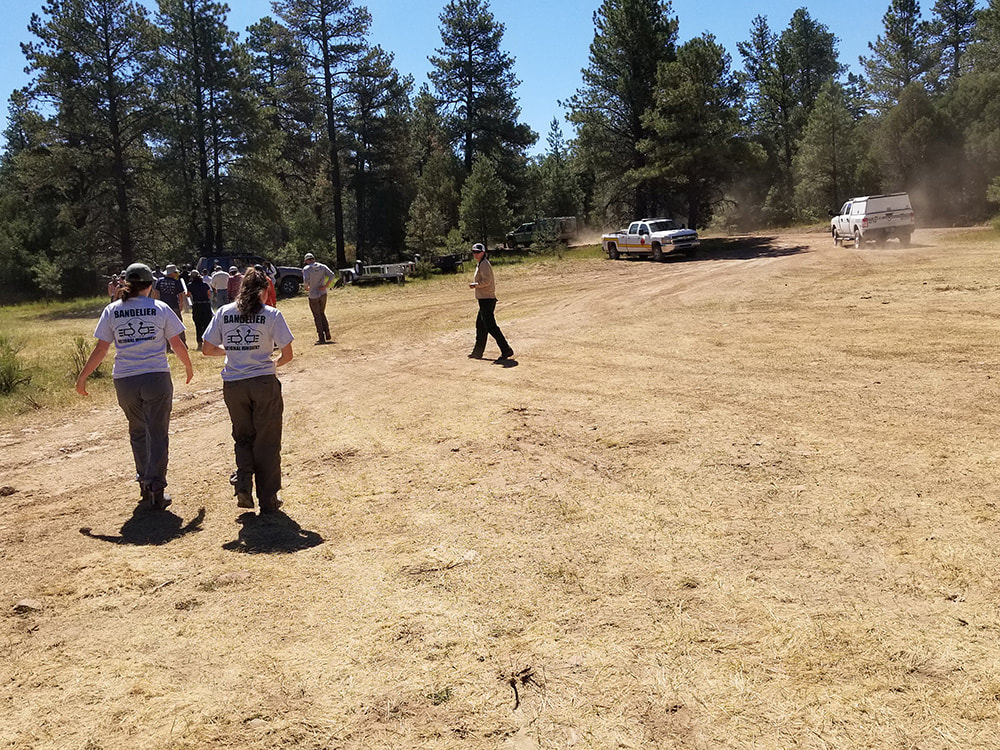

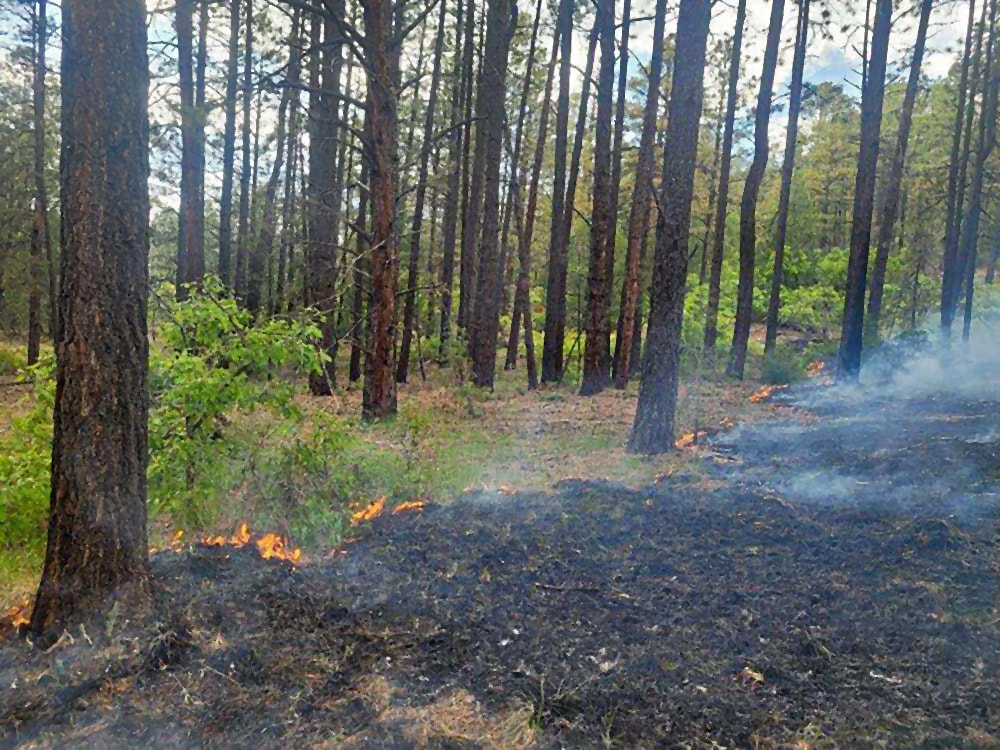

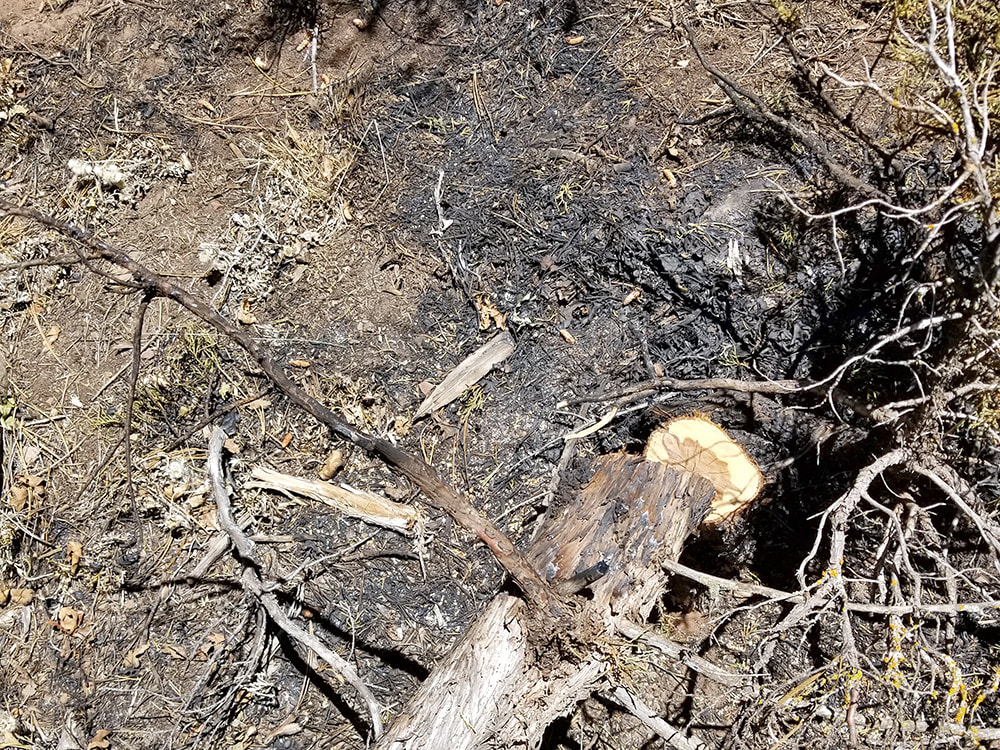
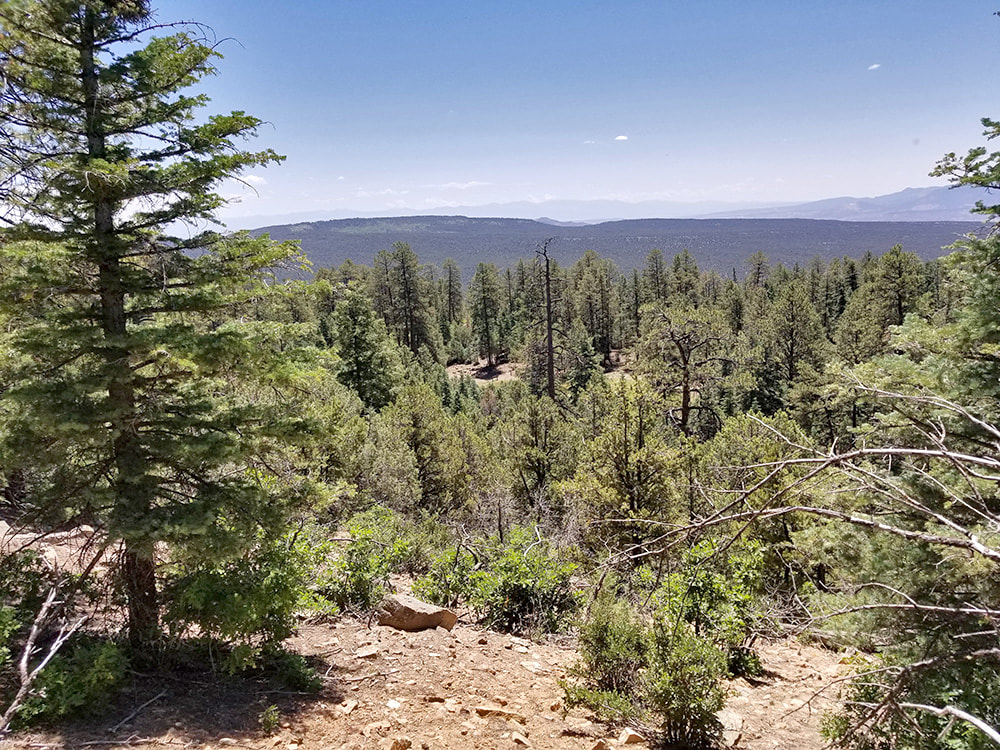
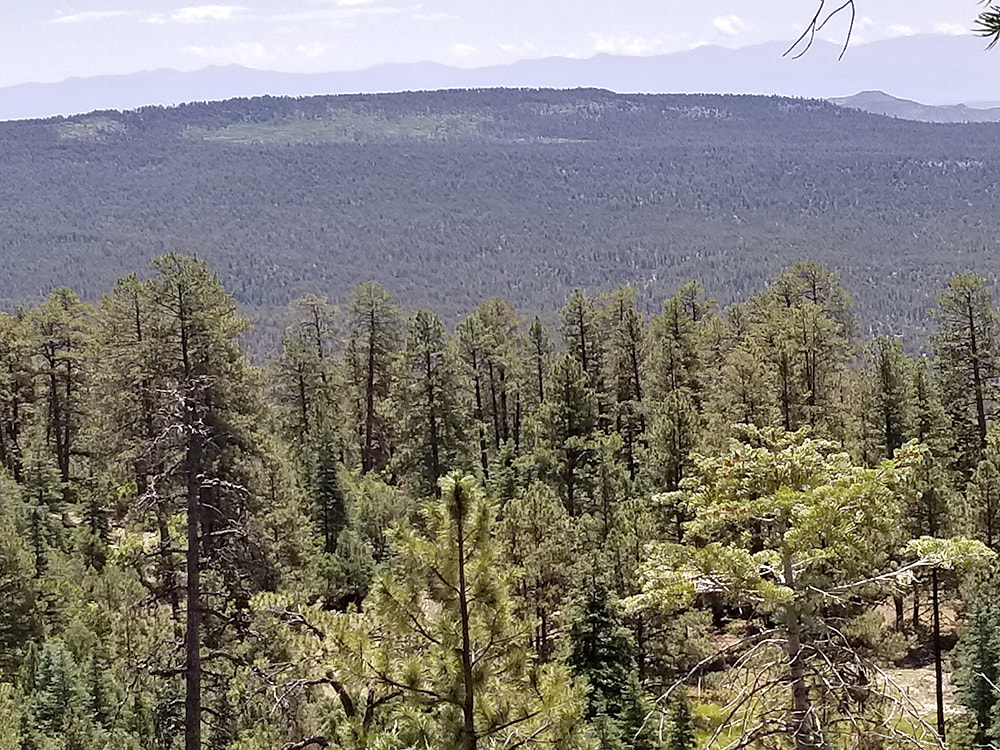
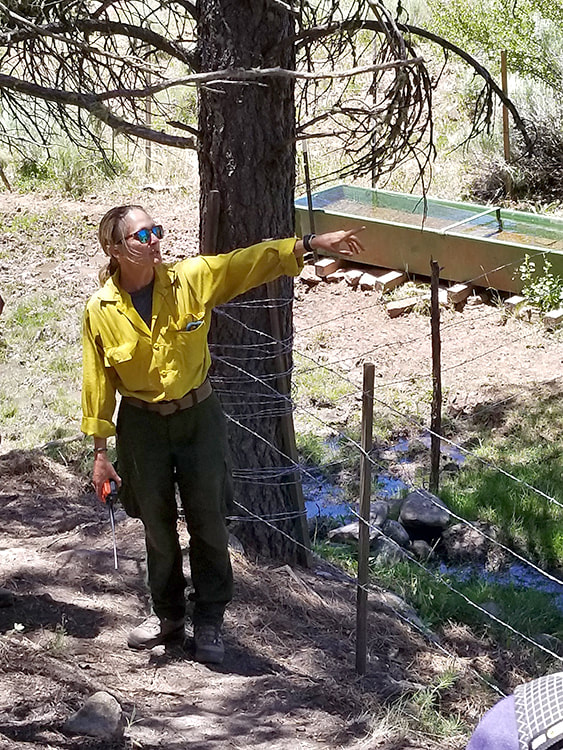


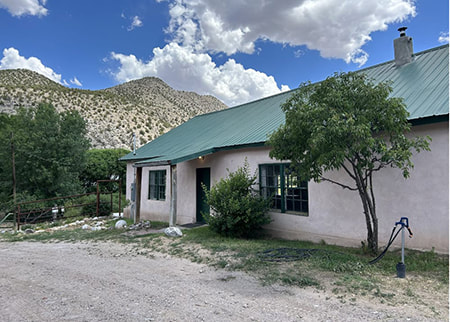
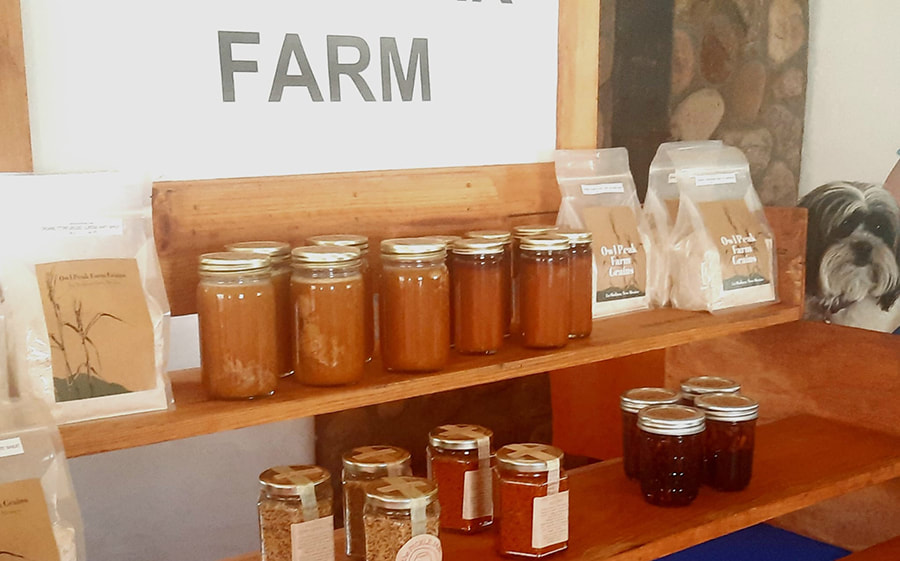
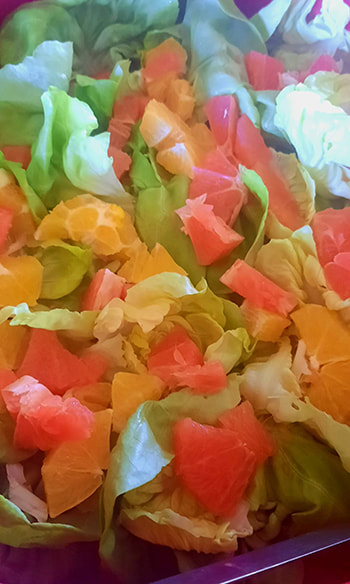
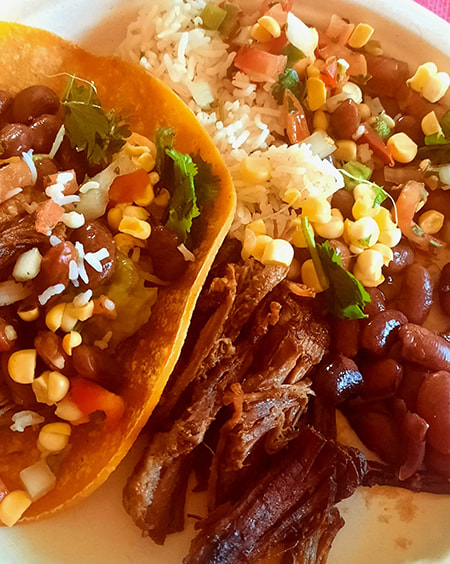
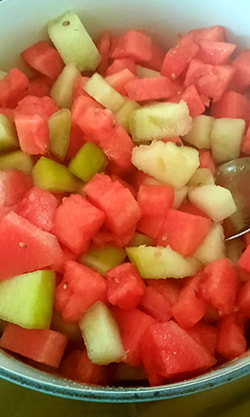


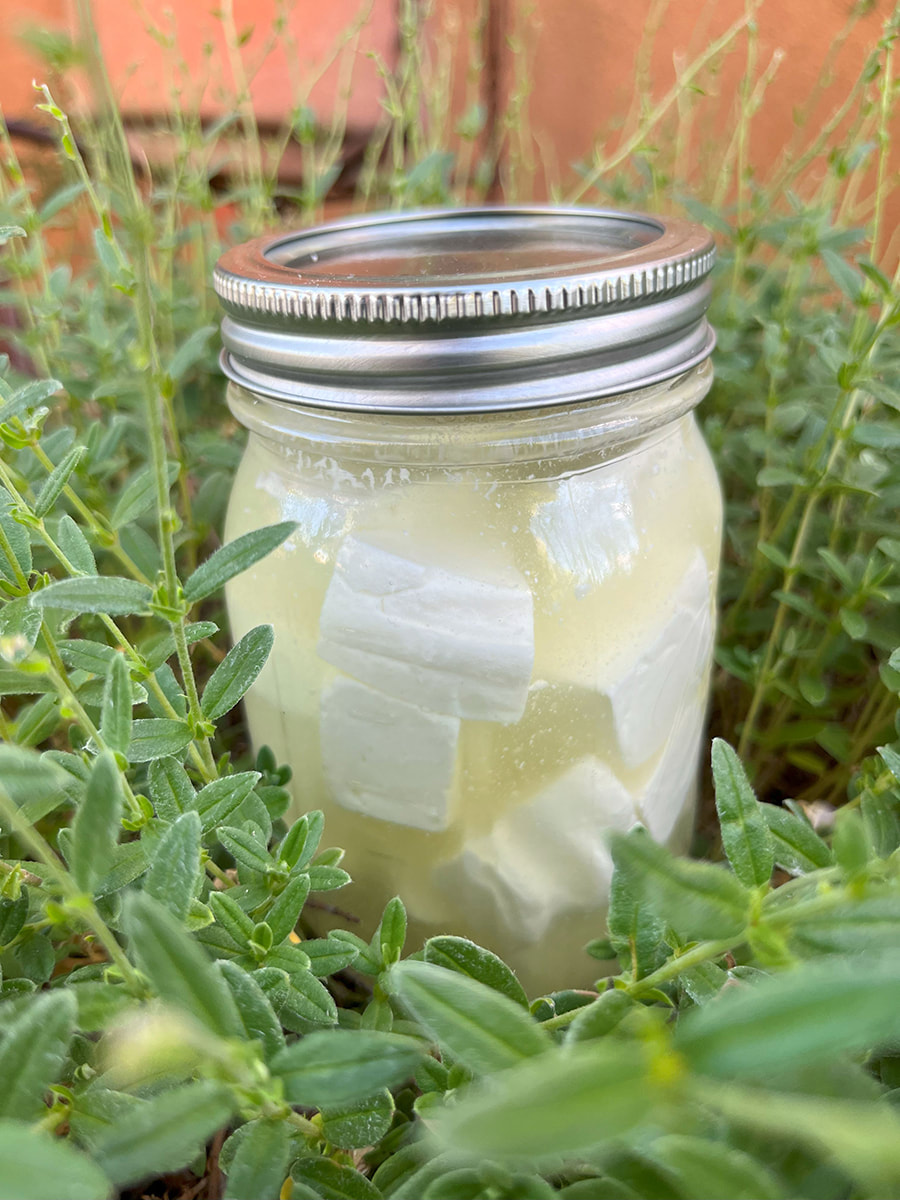







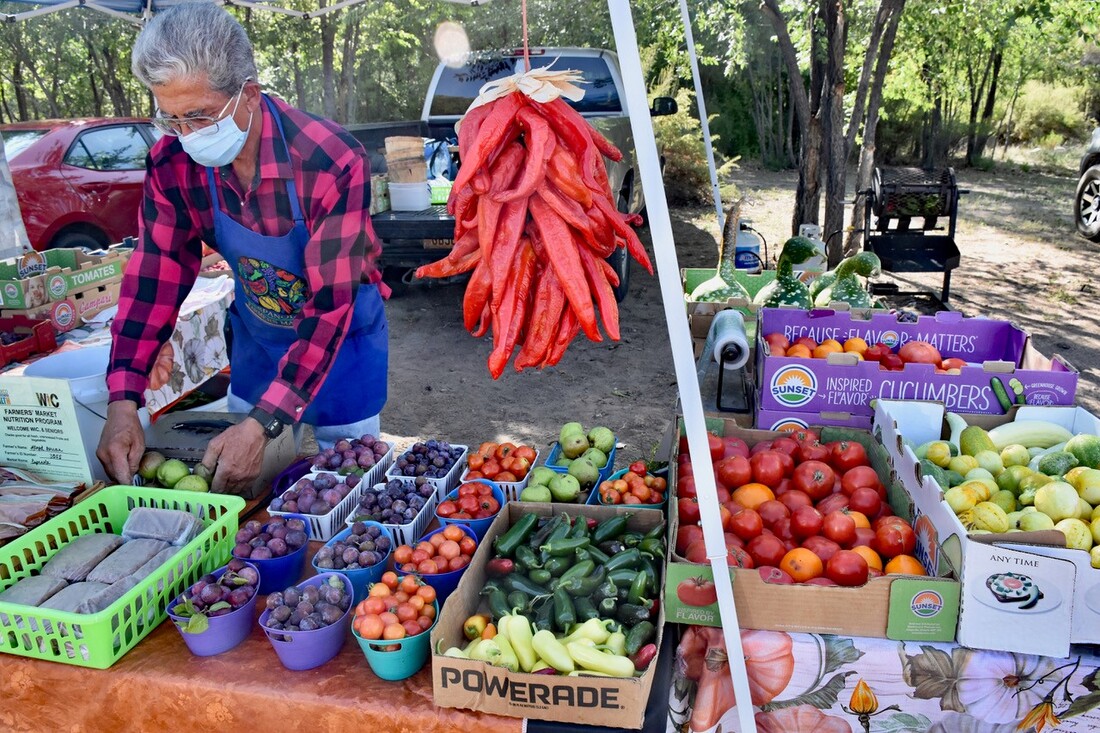
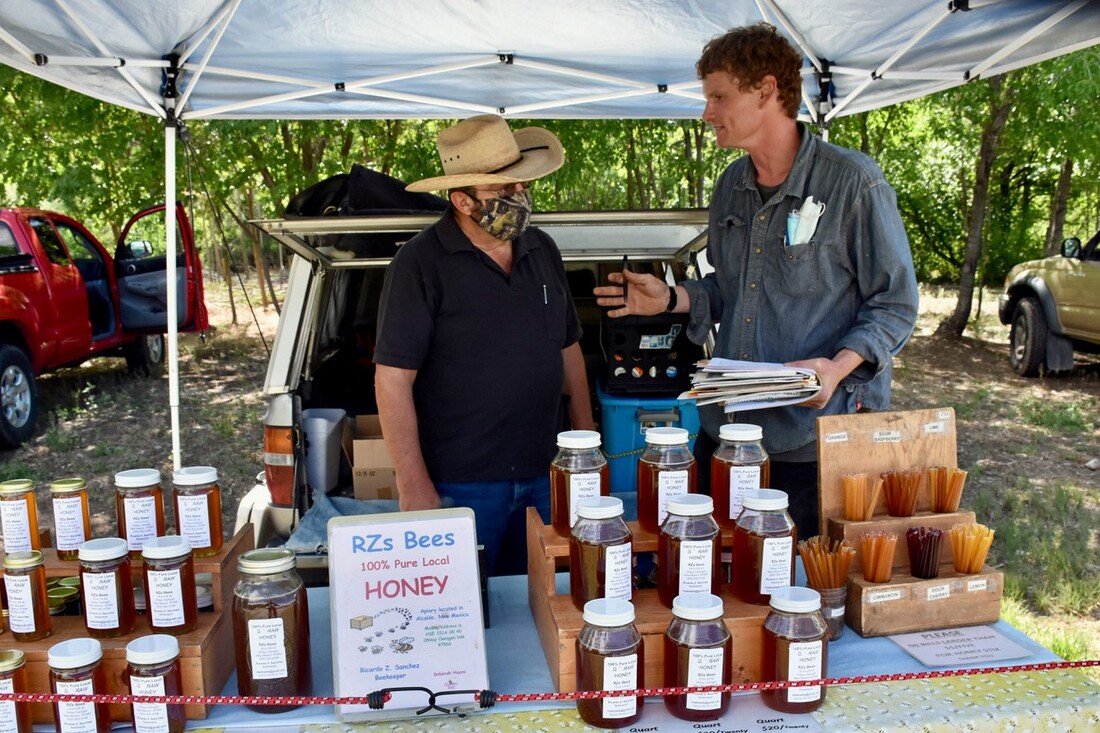
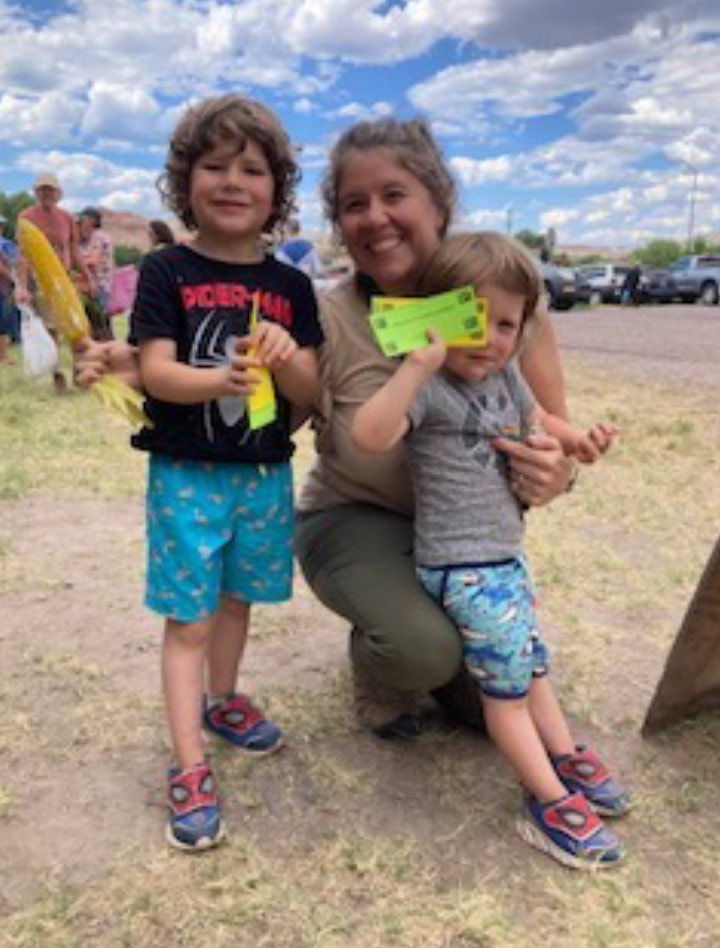
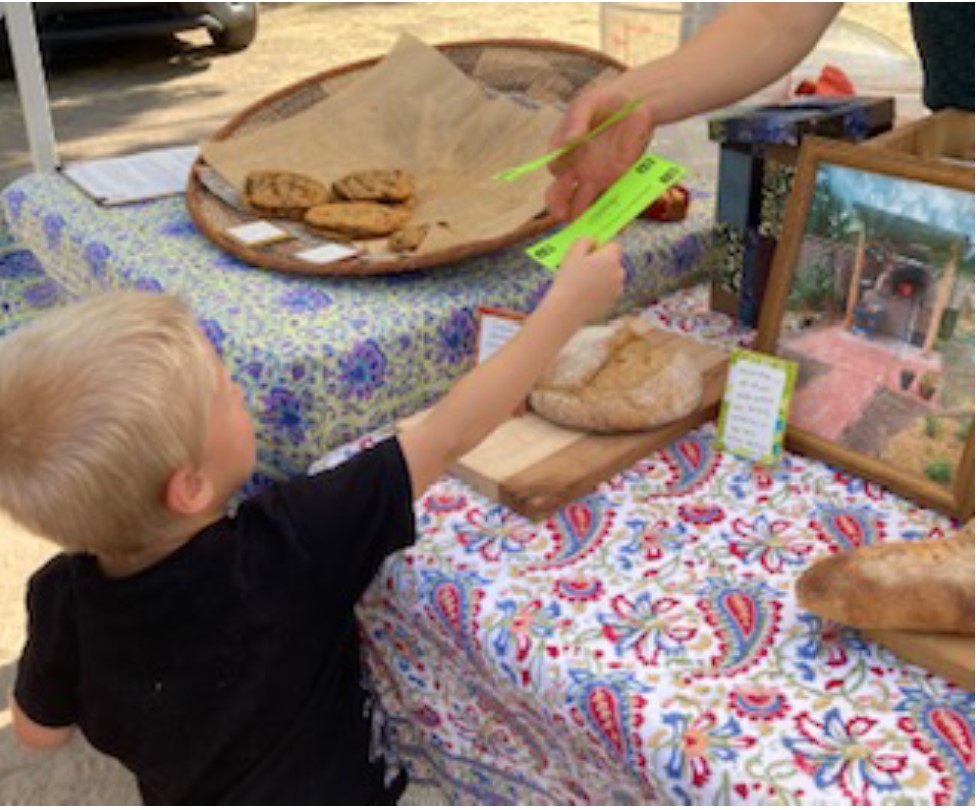

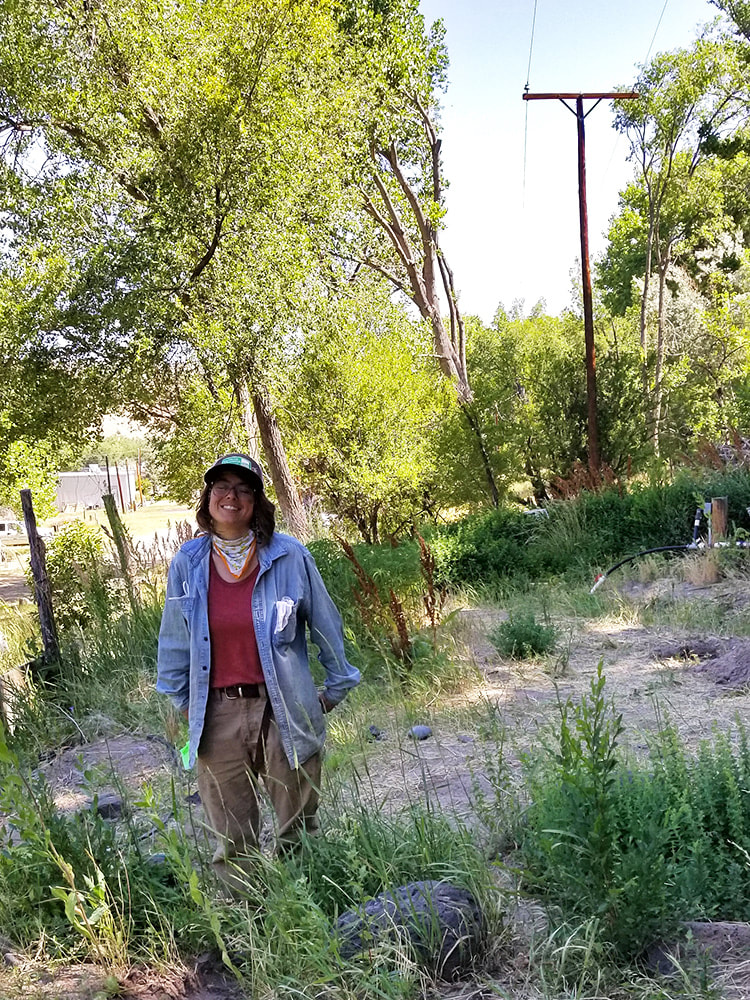


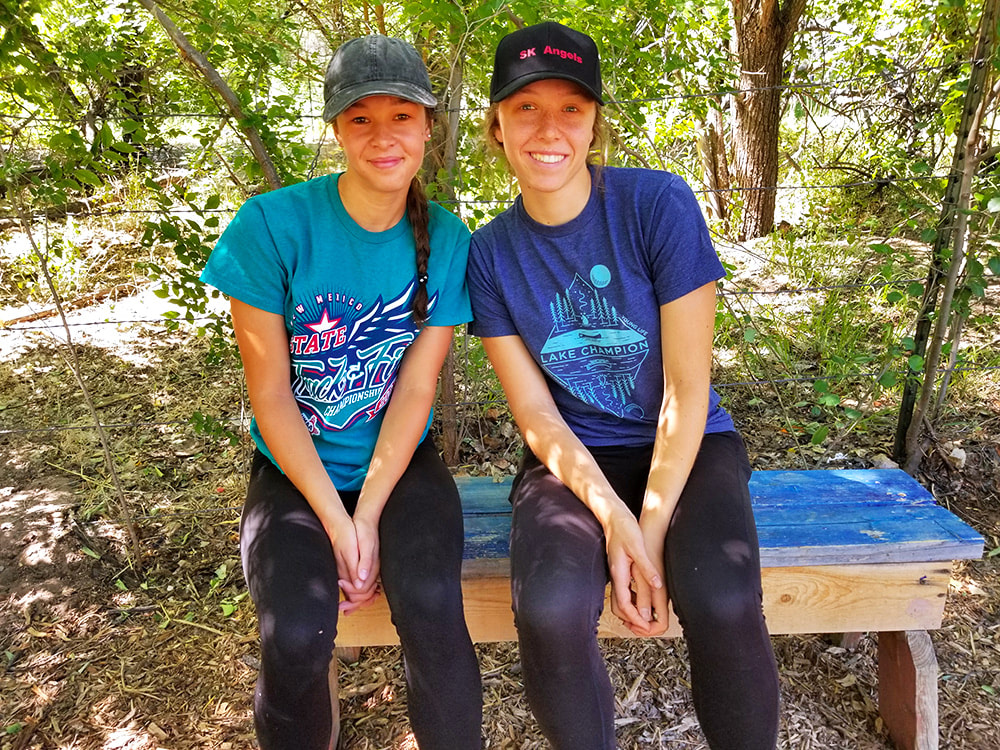

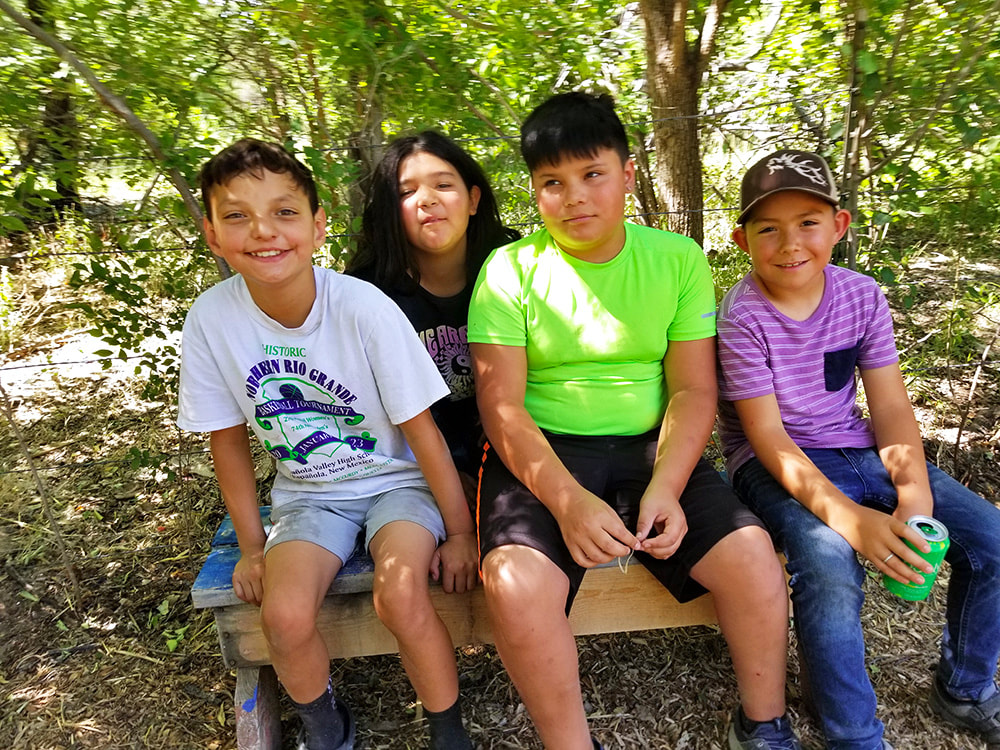

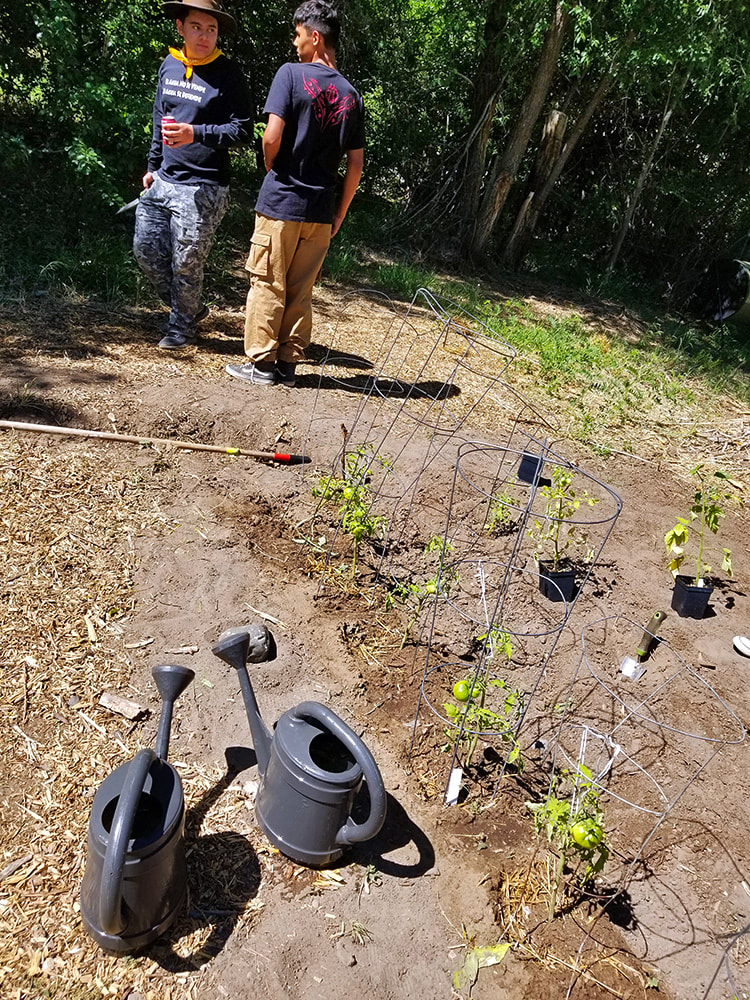
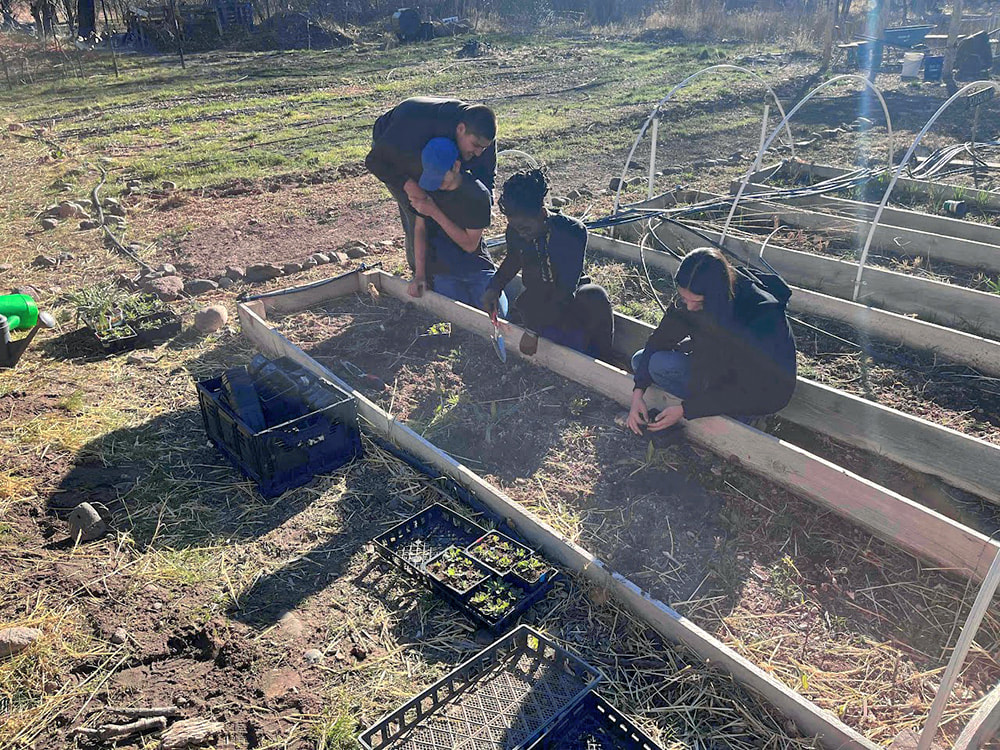
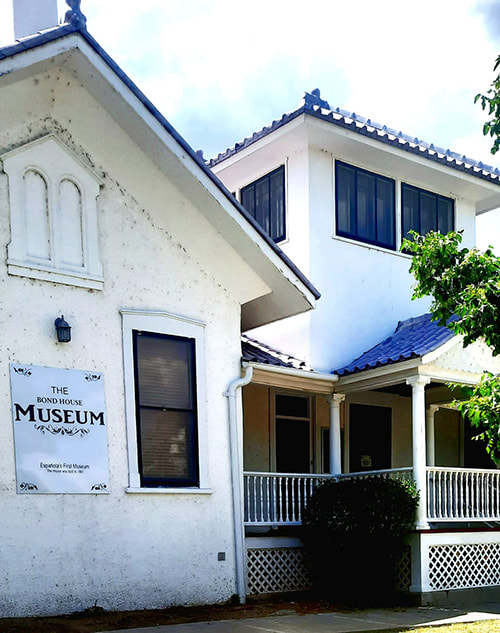
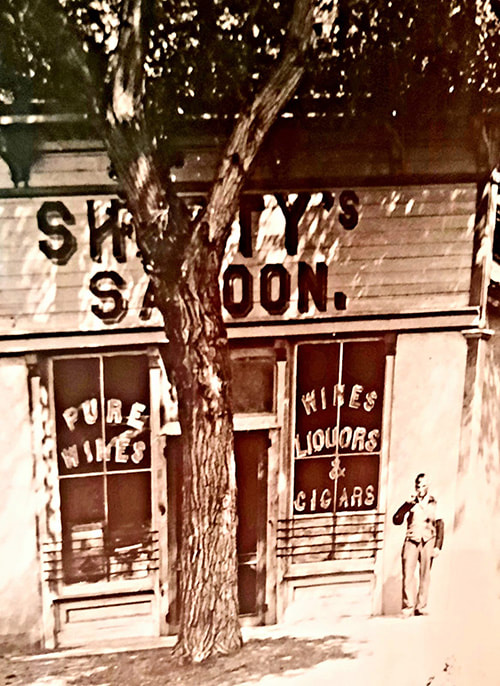

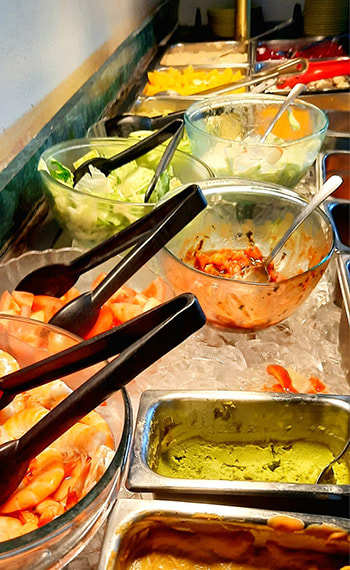

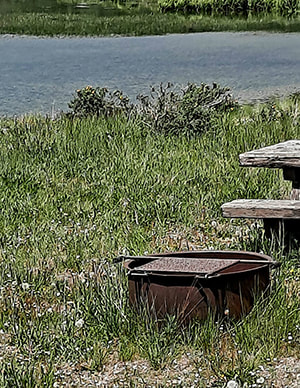




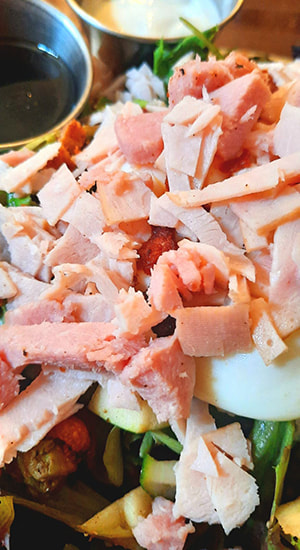

 RSS Feed
RSS Feed